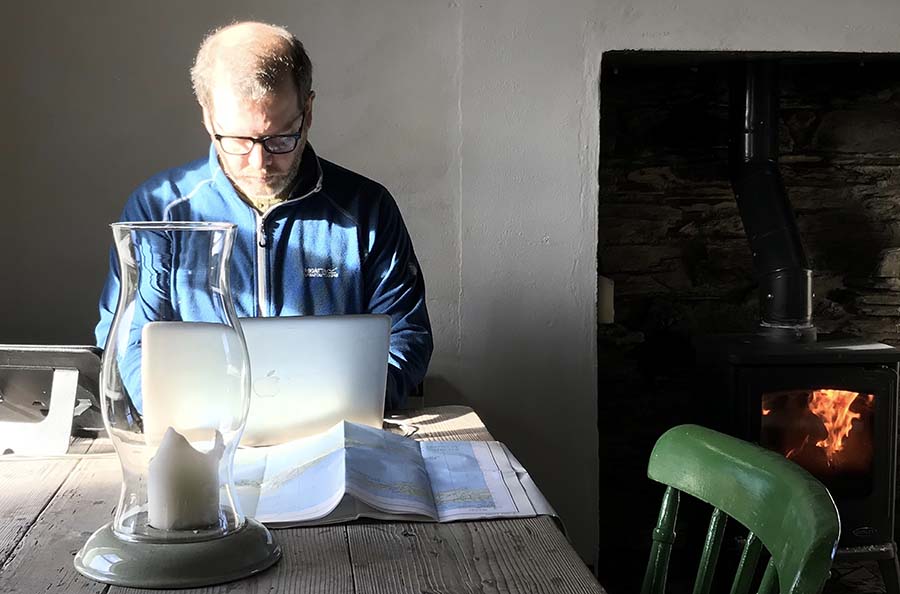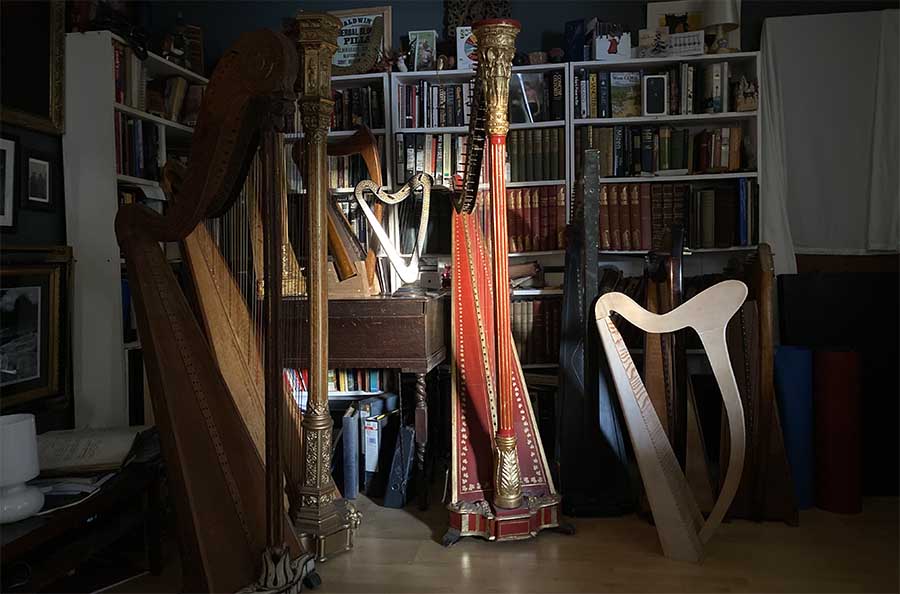Dr Michael Baldwin is harp maker and restorer, an author and a London Met PhD graduate. He completed an MA by project and an AHRC funded PhD at London Met. His research examined the early nineteenth-century, London-made harp, with particular regard to its mechanical and decorative development.

Michael Baldwin
The harp in early nineteenth-century Britain : innovation, business, and making in Jacob Erat’s manufactory
Supervisors:
Lewis Jones and Christina Paine
Examiners:
Prof. David Rowland and Dr Jenny Nex
Abstract from Dr Michael Baldwin's full thesis:
This thesis examines the early nineteenth-century, London-made harp, with particular regard to its mechanical and decorative development, and to the business practices of Jacob Erat (1758-1821), a prominent maker, and his immediate successors. The key protagonists are identified and situated in relation to one another, revealing a hitherto hidden sector of London industry. Forensic analysis of financial accounts (constituting a pioneering big-data study of an instrument) reveals new information about the harp, demonstrating how statistical methods can enrich organology, design history, and cultural history.
A rise in popularity of the harp is traced through quantitative assessment of performance and the publication of printed music. The form and decoration of the harp are considered in relation to architecture, furniture, and pictorial representation of costume, thereby identifying it as the most costly, ornate, and fashionable instrument of the era. A product of industrial revolution, the mechanised harp enjoyed a period of swift development in London, during which predominantly foreign innovators and makers produced a distinctly English instrument, in contradistinction to the French one, which blossomed a generation earlier. Twenty-three British patents (1794-1845) show that competition was intense and that makers vied for superiority.
The Erats’ manufactories at 100 Wardour Street (1798-c1821) and 23 Berners Street (1820-1858) are reconstructed from documentary evidence. Changing patterns of workshop use and organisation are revealed by comparison of three inventories (1821, 1822, and 1824). The Erat family is positioned in terms of social class, by analysis of household accounts and wills, showing declining wealth as the business passed between generations. Analysis of company accounts offers insights into manufacture and consumption of the harp: the full range of Erat’s products are described, and customers (yielding income) and suppliers (incurring expenditure) are identified. The wages, training, and working conditions of the workforce illuminate the complex organisation of a craft-based company in the midst of industrialisation; manufacturing techniques, specialised and those common to other trades, are discussed. The workshop diary (1819-21) of Robert Willis (1800-1875), written while an interloper in Erat’s manufactory, serves to illuminate the intersection of innovative design, prototyping alongside manufacture, and the web of business relationships between proprietor and workforce, and with customers and competitors.
Mike Baldwin lives in London. After completing a degree in Music Technology in 1995, in which he specialised in harp making, he worked for Pilgrim Harps, the UK’s leading harp maker. In 2000 he retrained as a special-needs teacher and now teaches outdoor learning to teenagers with moderate and severe learning disabilities in a West London woodland. In 2008, following his discovery of the Erat harp company papers, Mike returned to study at London Metropolitan University, completing an MA by project in Musical Instrument Technology and an AHRC-funded PhD. In 2019 he won The Terence Pamplin Award for Organology from The Worshipful Company of Musicians. His first book, Mizen: Rescued Folklore, Histories and Songs from Ireland’s South-West, was published in 2019 and his second, Harp Making in Late-Georgian London, followed in August 2020.
Mike balances teaching with writing and lecturing on musical instruments, particularly the harp. He has been invited to speak and presented at conferences around the world including at the prestigious Oxford and Cambridge Universities (UK), Deutches Museum (Munich), and The Metropolitan Museum of Art (New York).
| mike@mike-baldwin.net | |
| Website | www.mike-baldwin.net |
| @MikeBaldwinHarp |
Books
-
(forthcoming) Baldwin, M. (2021). Skibbereen: Rescued Folklore and Histories from Ireland's South-West. Bright Light Books, London.
-
Baldwin, M. (2020). Harp Making in Late-Georgian London (The Nineteenth-Century Harp). Bright Light Books, London.
-
Baldwin, M. (2019). Mizen: Rescued Folklore, Histories and Songs from Ireland's South West. Bright Light Books, London.
-
Baldwin, M. (2017). The harp in early nineteenth-century Britain : innovation, business, and making in Jacob Erat’s manufactory. Doctoral thesis, London Metropolitan University.
Articles
-
Baldwin, M. (2017). “Robert Bruce Armstrong's Irish and Highland Harps”, The Time Traveller Magazine, 2.
-
Baldwin, M. (2013). “The Erat Harp Manufactory: Painted and Gilded Decoration 1821-1826.” The Galpin Society Journal, 66, pp. 149-254.



